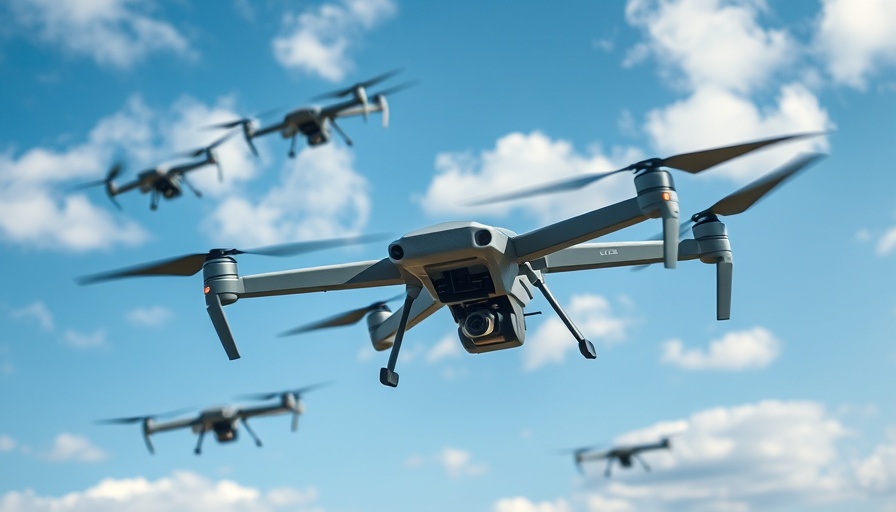
The Growing Drone Threat: Why the US Military Needs Better Defense Tools
In a recent congressional hearing, US military officials expressed critical concerns about the nation’s preparedness against drone threats. With advancements in drone technology outpacing countermeasures, the security of America's military bases could be at risk. Intriguingly, in just one year, there have been over 350 reported drone sightings at military installations across the country, highlighting the urgent need for enhanced defenses.
Understanding the Drone Dilemma: A Shift in Warfare
The emergence of drones has radically altered how military operations are conducted. Rear Admiral Paul Spedero, vice director for operations for the Joint Chiefs of Staff, emphasized this during the hearing, stating, “The homeland is no longer a sanctuary.” Terrorist organizations are leveraging drones for both surveillance and potential assaults, making traditional defense strategies increasingly outdated.
This fear has become palpable following drone sightings over various military facilities, including notable installations in New Jersey. The frequency of these encounters signifies a pattern that could threaten national security if not adequately addressed.
Countermeasures Lagging Behind Advancements
Spedero further noted that the technological arms race between drone capabilities and counter-drone systems is heavily imbalanced. “Drones can already circumvent many traditional jamming techniques,” he remarked, showcasing a glaring weakness in the current defense apparatus. This trend puts military installations at a considerable disadvantage, especially as the technologies used by adversaries grow more sophisticated.
The Pentagon has acknowledged this critical gap in defense, yet responses have been slow. Recently approved funding includes $1.1 billion for expanding drone manufacturing and approximately $250 million allocated for land-based counter-drone initiatives, an encouraging but still insufficient step towards comprehensive national security.
Changing Procedures Amid Growing Threats
The House Oversight Committee meeting also addressed the evolving standard operating procedures for base commanders. Military leaders now face the necessity of developing rapid responses to drone threats. These changes come in direct response to the alarming drone sightings and the recognition that existing protocols may not be equipped to handle a drone incursion effectively.
Other defense officials echoed the sentiment of urgency, with one stating that the threats posed by drones necessitate re-evaluating entire defensive frameworks at the bases. The rising demand for advanced countermeasures is clear, and immediate action appears to be non-negotiable.
Looking Ahead: What This Means for National Security
The dialogue surrounding drone defense capabilities is expected to intensify, particularly as military officials push for more funding and resources to prevent vulnerabilities. A comprehensive strategy that incorporates state-of-the-art drone technologies and countermeasures is critical in ensuring the safety of US military assets both domestically and abroad.
As we look to the future, understanding this evolving threat landscape will be essential for both policymakers and the public. Without timely enhancements to our drone defense capabilities, military bases could find themselves increasingly exposed.
This imperative is not just a matter of military strategy but fundamentally a question of national security. As the drone threat becomes more sophisticated, so too must the approaches to counter them.
 Add Row
Add Row  Add
Add 




 Add Row
Add Row  Add
Add 








Write A Comment